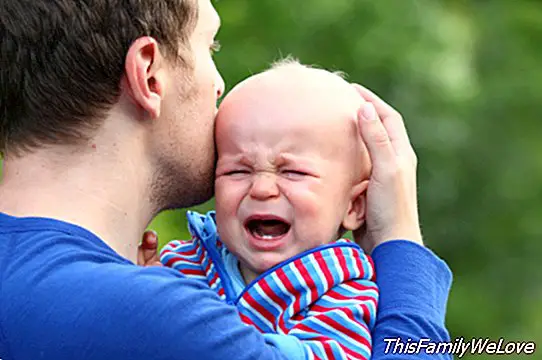Spasms of the sob, what to do when the baby is deprived and does not breathe?
More than one father has run to the emergency room with his son because he has stopped breathing when he was crying in an exaggerated way, even turning blue due to lack of oxygen. This type of breathing blocks during the "dislike" of the baby is known as sob spasms, something that, for the peace of family and caregivers, does not usually leave any injury.
Between 6 months and 5 years, 5 percent of babies suffer this type of apnea at some time, with possible subsequent fainting, an episode that happens in less than a minute without major consequences. In the case of older children, it is estimated that 10 percent or more of these have spasms of sob, episodes of shortness of breath due to a tantrum or a tantrum when they are contradicted or hurt, which can also be associated with brief convulsive crises.
Generally, the spasms of the sob occur around 2 years and are usually exceeded after 6 years, and may happen several times a day or occasionally. But until then, it's a good idea for parents to know how to prevent sob spasms, anticipate their arrival, identify their signs and have knowledge on how to act if they occur, especially if they are fairly continuous.
What are the sob spasms?

Apnea occurs when a person's breathing stops for whatever reason, temporarily (such as obstructive sleep apnea) or prolonged (such as respiratory arrest or cardiac arrest). In the case of the spasms of the sob, it is a momentary cessation of breathing when crying moving the body and with noisy breaths.
Symptoms of sob spasms
During the spasms of the sob, the heart rate decreases for a short space of time, just like breathing, because the child gasps, exhales air and, finally, stops breathing. Parents can recognize these episodes because:
- the child's skin turns blue or pale
- the little boy loses consciousness for a few seconds during the spasm
- suffers two or three convulsive movements in arms and legs
Causes and consequences of sob spasms
The reasons why children stop breathing when they are overly upset are unknown, but they tend to occur more frequently in those with relatives who have also suffered these episodes. In addition, they are more common in children with
- Genetic conditions such as Riley-Day syndrome and Rett syndrome, both disorders that affect the nervous system
- Iron deficiency anemia (lack of iron)
The child usually does not do it voluntarily, although some may use it to attract attention, and it usually happens in response to fear, pain, a traumatic event or being scolded.
In any case, these events do not involve risks to the health of the child, who recovers only quickly and completely, returning to breathe normally after a brief time of loss of consciousness and returning to acquire normal skin color as soon as he returns to breathe.
How to act before the spasms of the sob?
Given this type of apneas, it is important:
- Keep calm and not showing much concern so that the child does not take advantage of these episodes
- Do not hit or move him because this technique does not shorten the duration of the sob spasm
- Place the child lying on his back to avoid accidents and facilitate brain flow
- Do not stop scolding or correcting for fear that they occur
- All members of the child's environment that take care of you must know that this can suffer spasms of the sob (caregivers, nursery or school, grandparents, etc)
After a spasm of the sob, when to go to the doctor?
It is convenient to call or go to the doctor when these spasms occur before 6 months or continue to be 7 years old.
Parents can also go to the pediatrician to diagnose if it is this type of episodes or in case parents need information or advice to deal with them.
Dr. Paloma Nacher.Pediatric Neonatology and Emergency Service of La Milagrosa Hospital in Madrid




